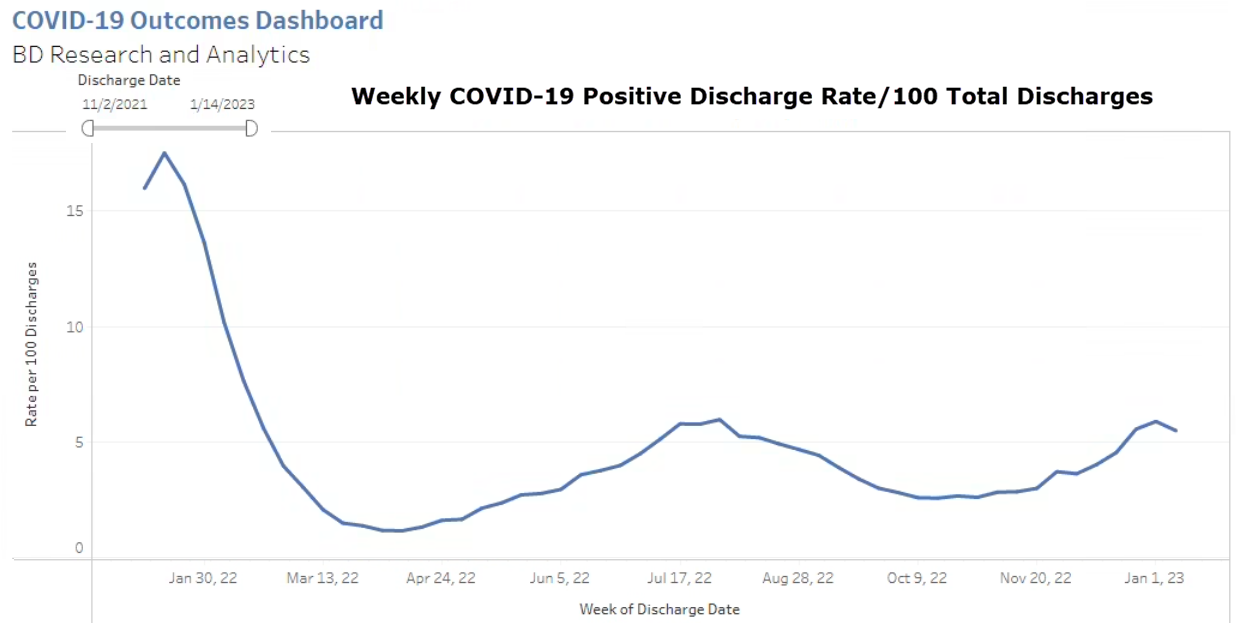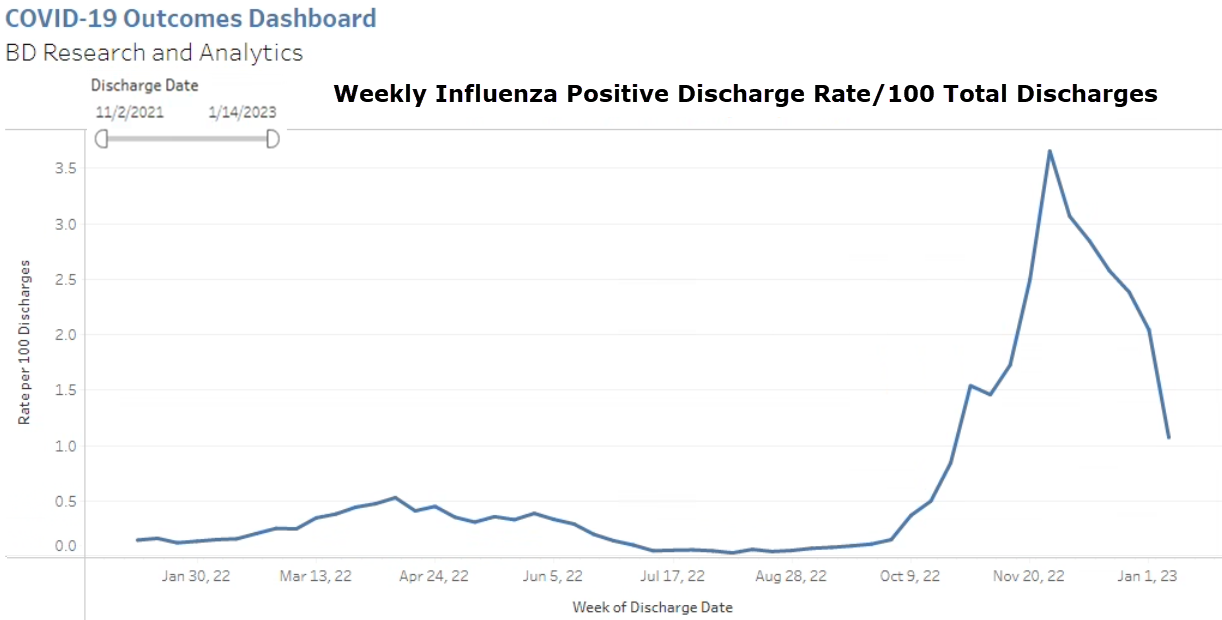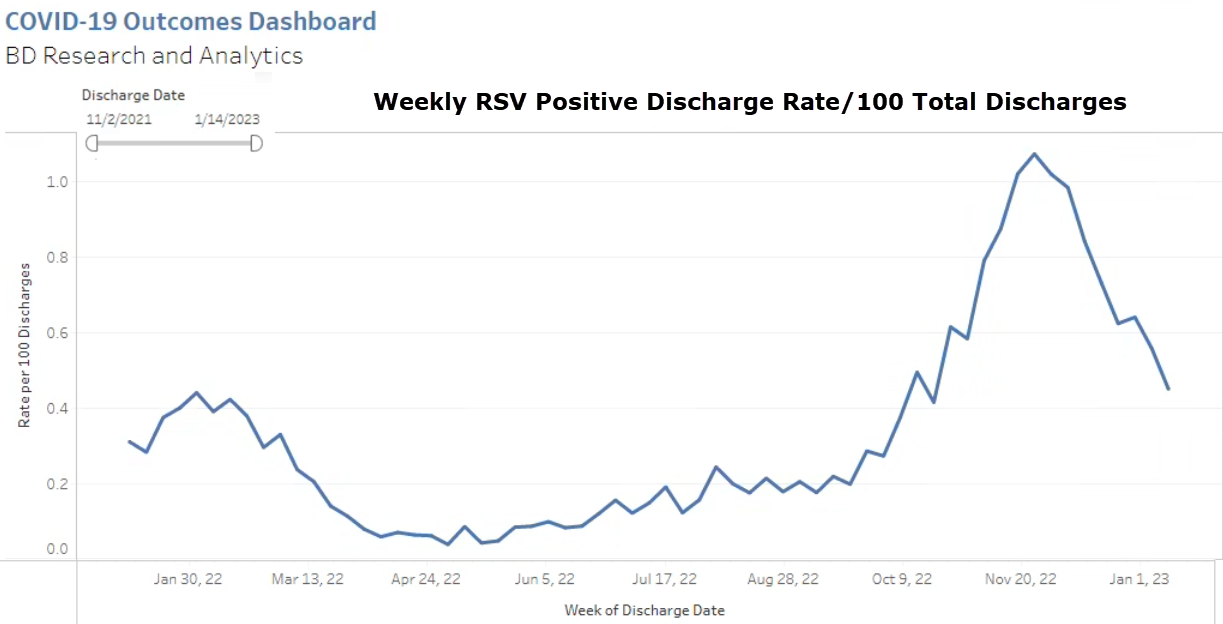
By Kalvin Yu, MD, FIDSA, Vice President of U.S. Medical Affairs and Vikas Gupta, Pharm.D., Director of Medical Affairs
In our eighth weekly snapshot of viral infections across the U.S, we present data through mid-January. Since our last blog post, hospital discharges for COVID-19 have remained relatively stable – while hospital discharges for both influenza and RSV continue to decrease. Similar to the information reported recently by the Centers for Disease Control and Prevention, our data suggests the U.S. has not experienced the anticipated post-holiday season spike in viral respiratory activity – given that both flu and RSV have continued to decline.
Here is what our discharge data show through January 14, 2023:
COVID-19
Hospital discharges for COVID-19 are at 5.9/100 hospital discharges (compared to 5.6/100 hospital discharges in our last blog post). We have not reached the discharge rate that the U.S. experienced during the peak of Omicron B.5 wave last summer (6.0/100 hospital discharges in our data for the week ending July 31, 2022) and the discharge rate remains far below the original Omicron wave from this point in January last year (17.5/100 hospital discharges in our data for the week ending January 16, 2022). The XBB 1.5 strain – which is widely thought to be a more infectious variant – is likely responsible for continued high COVID-19 activity in this post-holiday period as both flu and RSV rates are decreasing.

FLU
After the early surge of flu activity in November, hospital discharges for flu experienced a continued reduction this week (1.1/100 hospital discharges compared to 2.4/100 in our last blog post). This aligns with the CDC report of flu activity continuing to drop week over week.

RSV
The RSV hospital discharge rate continues its overall decline and is currently at 0.5/100 hospital discharges (compared to 0.6/100 hospital discharges in our last blog post). This is the sixth consecutive week where hospital discharges for RSV are below the 1.0/100 hospital discharges threshold.

About BD Infectious Disease Insights
Emerging infectious diseases have been increasing in frequency during the past few decades. None have assessed the U.S. health care system’s capacity or resiliency like COVID-19 – forever changing the way that we think about future outbreaks and how we manage the related unintended consequences. The BD Infectious Disease Insights series investigates today’s most prominent infectious disease trends. The series leverages the depth and breadth of our data to serve as an ongoing bellwether on the state of infectious diseases in the U.S., backed by clinical insights on how to increase overall awareness and preparedness
Subscribe to receive BD blog alerts